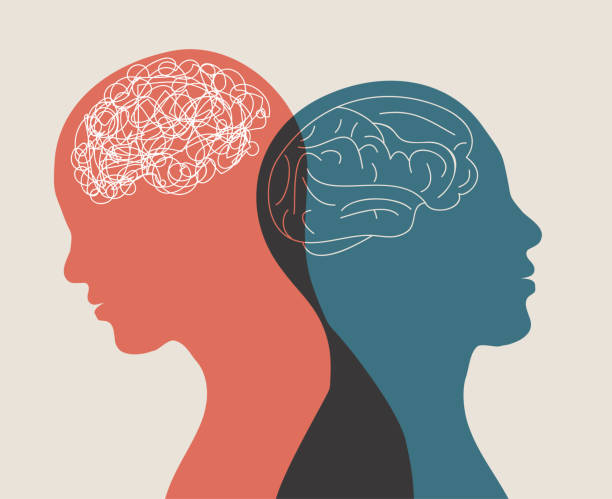Introduction
We often think of communication as a verbal activity—something done with words, either spoken or written. However, research consistently shows that the majority of human communication is nonverbal. Facial expressions, gestures, posture, eye contact, and even silence convey powerful messages. Known as nonverbal communication, these cues can reinforce, contradict, or replace spoken language, often revealing more than words ever could.
Read More- Exam Stress
The Psychology Behind Nonverbal Communication
Albert Mehrabian’s (1971) communication model famously suggested that in conveying feelings and attitudes, 7% of meaning is derived from words, 38% from tone of voice, and 55% from body language. While this ratio applies specifically to communication involving emotions, it underscores the significance of nonverbal cues.

Nonverbal behavior is largely shaped by both biological and cultural factors. Evolutionary psychologists suggest that certain facial expressions (like smiling or frowning) are hardwired and universal (Ekman & Friesen, 1971). These nonverbal signals evolved to aid survival—helping humans detect threats, convey emotions, and coordinate group behavior.
Types of Nonverbal Communication
The types of nonverbal communication includes-
:max_bytes(150000):strip_icc()/what-is-nonverbal-communication-1691351_FINAL-f08a0b35c5a84fef9513cf92ed0eaf2c.png)
1. Facial Expressions
The face is a primary source of emotional expression. Paul Ekman’s cross-cultural studies identified six basic emotions—happiness, sadness, anger, fear, disgust, and surprise—that are universally recognized.
2. Gestures
Gestures such as waving, pointing, or nodding are culturally specific yet crucial for reinforcing or replacing speech. Emblems (direct translations, like a thumbs-up) and illustrators (which accompany speech) both fall into this category.
3. Posture and Body Orientation
How people carry themselves can signal confidence, openness, defensiveness, or submission. Open body language often indicates receptiveness, while closed or angled posture can reflect discomfort or disengagement.
4. Eye Contact
Gaze patterns regulate conversation flow, signal interest, and build connection. Eye contact norms vary across cultures—while direct gaze indicates confidence in Western societies, it may be seen as confrontational in others.
5. Paralinguistics
This includes vocal elements other than words—tone, pitch, loudness, and rhythm. Sarcasm, enthusiasm, or anger is often detected more through tone than content.
6. Proxemics (Use of Space)
Coined by Edward Hall, proxemics explores how physical space communicates intimacy, aggression, or status. Personal space boundaries vary across contexts and cultures.
7. Haptics (Touch)
Touch can express affection, control, or power. A handshake, hug, or pat on the back carries distinct meanings depending on context, relationship, and culture.
8. Appearance and Artifacts
Clothing, hairstyles, and accessories send strong nonverbal messages about identity, status, and personality.
Functions of Nonverbal Communication
Some functions of nonverbal communication include-
1. Complementing Verbal Messages
Gestures and facial expressions often reinforce what is being said. A smile accompanying a compliment enhances its sincerity.
2. Contradicting Verbal Communication
Nonverbal cues can conflict with spoken words, signaling deception or sarcasm. For example, saying “I’m fine” with a flat tone and averted gaze may indicate otherwise.
3. Regulating Interaction
Eye contact, nods, and pauses help manage the flow of conversation, indicating when it’s someone else’s turn to speak.
4. Expressing Emotions
Many emotions are expressed more effectively through body language than through words. People often detect others’ emotional states via posture or tone rather than direct statements.
5. Establishing Social Hierarchies
Power dynamics are often conveyed through posture, touch, and space. For example, those in dominant roles tend to take up more space and maintain strong eye contact.
Cultural Variations and Challenges
Nonverbal communication is heavily influenced by cultural norms. A gesture considered polite in one country may be offensive in another. For instance, the “OK” sign is innocuous in the U.S. but offensive in Brazil. Misinterpreting these signals can lead to social faux pas or communication breakdowns, especially in multicultural environments.

Nonverbal Communication in Different Contexts
Some ways in which nonverbal communication is important are-
1. Interpersonal Relationships
Nonverbal cues play a critical role in romantic relationships, friendships, and family dynamics. Consistent eye contact, mirroring, and physical closeness foster intimacy and trust.
2. Healthcare Settings
Clinicians’ nonverbal behaviors—like posture, eye contact, and tone—can affect patient satisfaction, trust, and even health outcomes (Hall et al., 1988).
3. Business and Leadership
Leaders are often judged by their nonverbal presence. Confident posture, calm tone, and active listening can inspire trust and command respect.
4. Education
Teachers’ nonverbal behaviors influence student engagement. Smiling, open gestures, and dynamic movement help create a positive learning environment.
Improving Nonverbal Communication Skills
Some ways to improve non-verbal communication include-
1. Self-Awareness
Understanding your own nonverbal habits can help align them with your intentions. Recording interactions or seeking feedback can aid this process.
2. Observational Skills
Being attuned to others’ body language enhances empathy and understanding. Pay attention to congruence between verbal and nonverbal signals.
3. Adaptability
Adjusting nonverbal communication based on context and cultural norms improves relational effectiveness.
Conclusion
Nonverbal communication is a powerful, often unconscious, component of human interaction. It reveals emotions, builds relationships, and regulates conversation. In an increasingly global and digital world, mastering the silent language of nonverbal cues is essential for effective and empathetic communication.
References
Ekman, P., & Friesen, W. V. (1971). Constants across cultures in the face and emotion. Journal of Personality and Social Psychology, 17(2), 124–129.
Hall, J. A., Roter, D. L., & Katz, N. R. (1988). Task versus socioemotional behaviors in physicians. Medical Care, 26(4), 397–412.
Mehrabian, A. (1971). Silent Messages. Wadsworth Publishing Company.
Subscribe to PsychUniverse
Get the latest updates and insights.
Join 2,995 other subscribers!
Niwlikar, B. A. (2025, June 23). Importance of Nonverbal Communication and 8 Important Types of It. PsychUniverse. https://psychuniverse.com/importance-of-nonverbal-communication/



